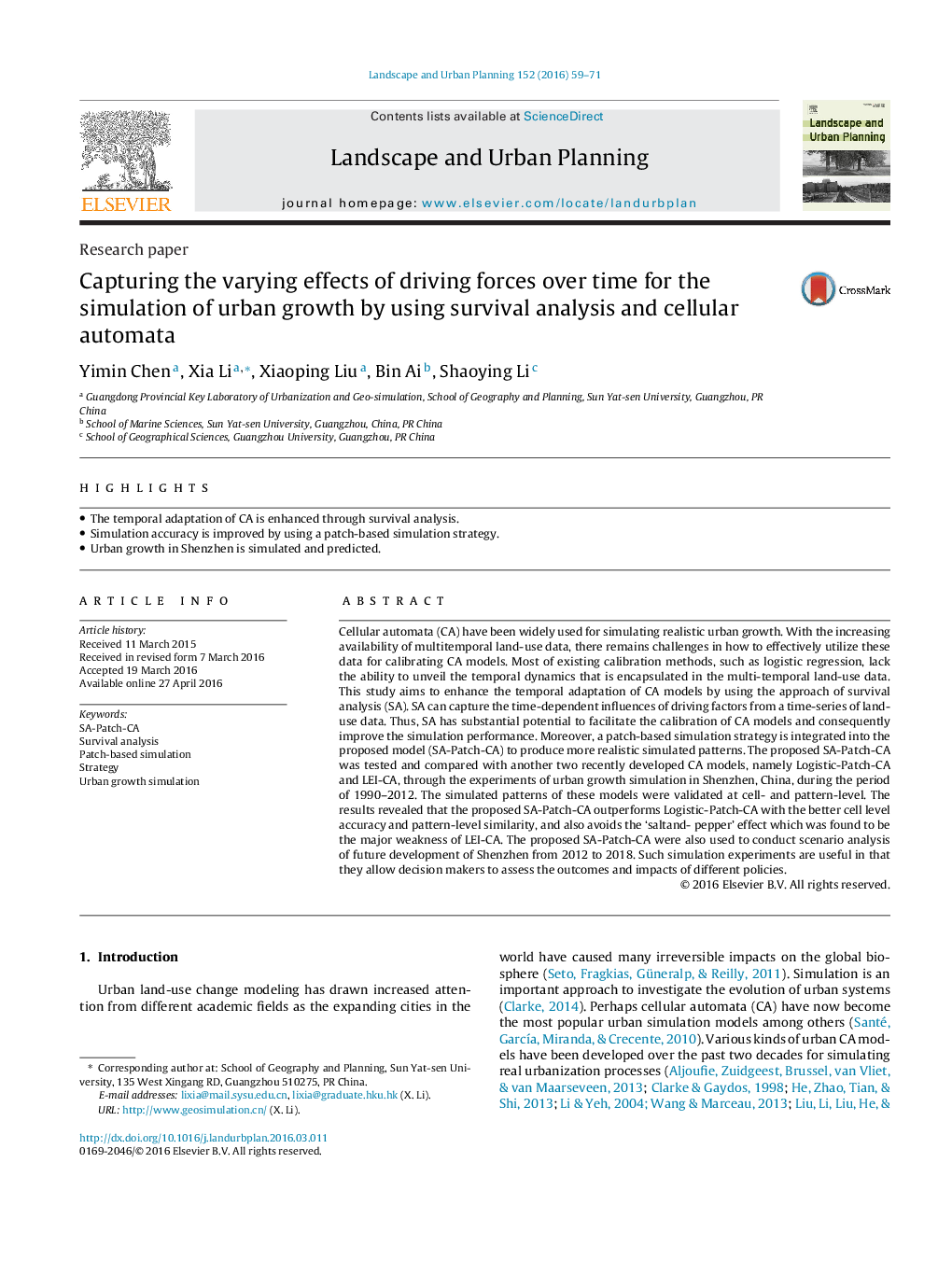| Article ID | Journal | Published Year | Pages | File Type |
|---|---|---|---|---|
| 7460596 | Landscape and Urban Planning | 2016 | 13 Pages |
Abstract
Cellular automata (CA) have been widely used for simulating realistic urban growth. With the increasing availability of multitemporal land-use data, there remains challenges in how to effectively utilize these data for calibrating CA models. Most of existing calibration methods, such as logistic regression, lack the ability to unveil the temporal dynamics that is encapsulated in the multi-temporal land-use data. This study aims to enhance the temporal adaptation of CA models by using the approach of survival analysis (SA). SA can capture the time-dependent influences of driving factors from a time-series of land-use data. Thus, SA has substantial potential to facilitate the calibration of CA models and consequently improve the simulation performance. Moreover, a patch-based simulation strategy is integrated into the proposed model (SA-Patch-CA) to produce more realistic simulated patterns. The proposed SA-Patch-CA was tested and compared with another two recently developed CA models, namely Logistic-Patch-CA and LEI-CA, through the experiments of urban growth simulation in Shenzhen, China, during the period of 1990-2012. The simulated patterns of these models were validated at cell- and pattern-level. The results revealed that the proposed SA-Patch-CA outperforms Logistic-Patch-CA with the better cell level accuracy and pattern-level similarity, and also avoids the 'saltand- pepper' effect which was found to be the major weakness of LEI-CA. The proposed SA-Patch-CA were also used to conduct scenario analysis of future development of Shenzhen from 2012 to 2018. Such simulation experiments are useful in that they allow decision makers to assess the outcomes and impacts of different policies.
Related Topics
Life Sciences
Agricultural and Biological Sciences
Ecology, Evolution, Behavior and Systematics
Authors
Yimin Chen, Xia Li, Xiaoping Liu, Bin Ai, Shaoying Li,
